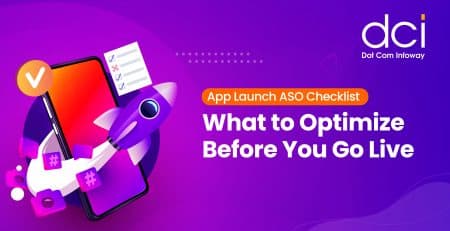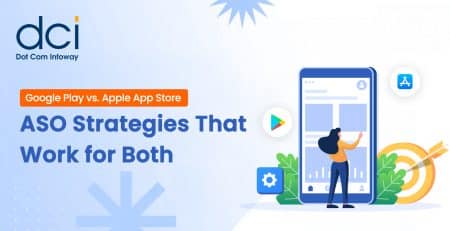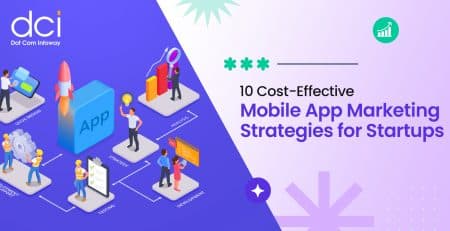The Beginner’s Guide to Mobile App Analytics to Improve your App Performance
One phenomenon highly likened with 21st century is smart technology on mobile handsets and tablets. Sophisticated technology also comes with a great deal of mobile apps. So far innovators are launching apps on all things and activities thus the need to borrow a leaf from mobile app analytics.
The platform ensures that your goal-oriented app attains peak performance. This shouldn’t give you jitters as we take through on the dos and don’ts in using mobile app analytics.

Why Mobile Analytics?
In a booming business such as the use of the mobile app, it’s a plus for app owners to understand how well the app works. This is visa vie the app market trends and projections which should guide in designing the app to meet.
Subsequently, this tool delivers personalized results on matters of user behavior and revenue accrued. Mobile app analytics replaces SQL and Excel which performed the task of interpreting the metrics used in apps. Mobile app analytics works best on apps with clearly defined goals.
Top App Analytics Tools
Since you’ve now acquitted yourself with the need of mobile analytics, we’re going to take you through the top approved analytic tools. They are:-
1. Google Analytics
The good thing about this tool is that it issues in-depth reports and insights on your app. Apparently, Google analytics is usable in both mobile apps and websites (making it the most common analytic tool).
2. Flurry Analytics
The statistics indicate that more than 170,000 businesses use these tools to study on retention, conversion, engagement rate among others.
3. App Annie
It’s available on Google Play store, iOS, Mac Store and Amazon Appstore. Some of the advantages include free services.
4. Marketplaces
This is the tribune where app developers advertise their product globally. An example is Google Play Store or iOS. Apart from been a market ground, these platforms can be resourceful in giving user trends and information.
5. AdWords
Basically, this is a tool that allows you to advertise your app on the Google search platform. This is via the Google Display Network which hosts millions of videos, websites and mobile apps.
6. AdMob
Are you planning on having your app known out there? Well, this tool enables you to advertise your mobile app on other apps and on a global scale. This is through pop ads that in directing more traffic and increased revenue. Some of the reports given are;
- Campaign report- shows campaign strategies that inject more revenue. Also outlines what to expect when you
- Hour of day report- projects time when the traffic is highest (in relation to value addition on your app).
- Keywords report – highlights most captivating keywords on your app
7. Segments
7.1 Event tracking
This section goes beyond the screens visited and interrogates the content made available on the app. As you go about event tracking, these are the factors to consider: swipes, button clicks, menu selections, video plays, ad clicks and purchases.
Once you’ve understood on areas that don’t satisfy the user, it’s up to you switch things up. Start of checking on the structure. In this case,use a clear flow as indicated below:
- Category
- Action
- Label
- Value
7.2 Screen Tracking
This is not rocket science as it simply means following up on favorite app screens among users. During this process, you’ll stumble upon screens where users stagnate and don’t proceed onwards. This should guide you in areas you need to step up and upgrade.
7.3 Funnel Tracking
Mostly applies for eCommerce apps as it looks at the sequential order a user follows. The common stages are cart, billing or shipping and placing an order. While looking at these phases you get to note where users fall out and work on this.
From prior tests, most firms have identified that a majority of users divert when they see the sign in page. In this scenario, you can circumnavigate and ask users to key in their password before making a purchase. Other analytics tools include:
- APsalar
- Tune
- Localytics
- Countly
- Mixpanel
Mobile App Analytics Strategies
While introducing the need for using mobile app analytics, we mentioned one benefit as monetary value/ revenue generation. Now under these strategies, the goal extends beyond the money-making motive. By this, we imply that the parameters checked to contribute to the overall success of the app’s performance.
App Downloads
Some time back, the number of downloads was what determined the success of the app. Surprisingly, this is isn’t the case nowadays. It is important that you analyze what each app download brings in to your company. Let’s say you have pay- per- download app. The more downloads you get the more revenue you get. However, you should check how many free apps are out there and whether you really profit from yours.
Bottom line is that you have to be strategic while pushing for more app downloads. Go ahead and check if users open the app once they’ve downloaded it. That’s how you know your app is favorite among users.
Retention Rates
We must acknowledge that this is the most fundamental analytics in the app world.
So what is retention rate?
This simply means the percentage of users who revisit your app after the first time. The more times users revisit your app, the better performing your app is and vice versa.
Let’s put this to perspective. The first time user is initially curious to find out how your app works. If he/she is amused if not they’ll disappear. So it’s crucial that you keep tabs on these metrics to convert more first-timers to lifetime users.
As you compare the numbers, you’ll be forced to devise new strategies to woe users to constantly use your app. Additionally, it’s essential that you monitor on uninstalls if you desire to enhance your app performance.
This gives app owners a chance to re-evaluate some metrics such as; app interface, usability, and functions of the application. Furthermore, a good retention rate signifies how efficient your app is in user engagement.
User Lifetime Value (LTV)
Lifetime Value (LTV) refers to the monetary gain accrued for having lifetime users on the app. This evaluation can be done in different phases, that is, daily/ weekly/ monthly/quarterly/ yearly. For any company, this analytics can be tapped to scrutinize potential revenue sources for the app.
To get these statistics, companies have to look at the user engagement rate and monetization. Furthermore, there is virality or the number of shares. So just like viral YouTube clips, it is advantageous for app owners to have their product spread out there.
How do you get here?
It’s quite simple. Encourage your users to share your app with their friends via social media and other online channels.
In LTV different formulae are applicable depending on the type of mobile app. Of course, to enjoy this, your mobile app should fascinate and amuse initial users.

The Ultimate Guide to Mobile User Acquisition
Developers have to put in efforts to market their apps amidst the rising competition. That is why there is need to have a mobile app user acquisition strategy.
Check out how to build a successful app user acquisition strategy.
In-app Referrals
As you check on the performance of the app, it’s advisable that the word spreads on the digital platform. This approach entails arguing users to refer your app to their friends. One way to do this is via email or social media. Make sure that you attach a referral code to this message in order to track how this process is undergoing.
If you achieve to get many referrals then it showcases the confidence users have in your app. This parameter enables companies to further analyze their app’s performance. One incentive used in the in-app referral is the issuance of discounts for first-timers.
App Performance Analytics
Apart from developing your app and having it on the market, it is important to monitor its functionality. That’s why we advocate for companies to do house-keeping and check on the nitty-gritty of their app.
App Ratings and Review Analytics
As you invest in marketing analytics, it’s important that you pay attention to what users say about the app. This is where app ratings and review come in. In most cases, users go through the review section to determine whether to have your app or not.
As a company, you should encourage users to drop their reviews after visiting the app. However, this alone is not adequate. It’s up to you to respond to the issues raised and appreciate the feedback provided. By doing this, you win in user engagement as you showcase your seriousness in customer care.
On the other hand, negative criticism offers you an ideal chance to re-evaluate the app and improve. So don’t make a mess of ignoring this rather, convert this into an opportunity to provide what user wants to be done on the app.
At the end of the day, these two aspects determine whether you’ll succeed to woe clients to your app or not.
In-app Feedback
The integration of mobile apps in the functioning of companies thrives best from user feedback. That’s why an in-app feedback is important in gauging an app’s performance. It just takes a few minutes for users to share with you their experience with the app. The good thing about this is that you get to identify specific issues (either positive or negative) and work on them.
In some cases, the feedback provided may not have been noticed by your team thus giving more information. However, not all users are fond of using the in-app feedback. It is then up to you to incorporate creative ways such as giving rewards to those who give responses. Merchandise such as T-shirts or caps can be attached to a code sent via email or other channels once the user has sent the feedback.
Note: Giving rewards does not necessarily mean that you’re bribing users but rather encourages them to give their honest opinion about the product.
In-app Revenue Metrics
This metrics majorly focus on the income generated by your app. To understand this, we going to discuss: Average Order Value (AOV) per user and AOV per paying user.
There are two types of app users; those who visit your app for free and those paying. It is up to you to monitor this numbers to ensure that you convert more to pay for the app. This is no mean task as it encompasses motivating users to transact on your app. For example, have a trial version for your gaming app then set a price for the full version.
Do you know where your app revenue is coming from?
If not, then mobile analytics allows you to pinpoint the location of your users. In-app purchases also leave traces of product ID, quantity purchased and the currency used.
User In-app Behavior
In this section, a number of parameters are checked. These are;
Type of users engaging with your app
It’s a fact that users are diverse in terms of age, interest, income or gender. App makers should keep track of this and ensure that their app is personalized. If you succeed in monitoring these features more users will be attracted to your mobile app.
Time spent on the app
This metric tells on user- time on the app with the more time spent signifies good performance and preference. Nonetheless, the results may give another interpretation such as pathetic loading time. It is thus advisable to go an extra mile and study what exactly users do while on the app.
Length of the user session
This refers to the time lapse from when a mobile user opens the app to the period he/she leaves it (at a single take). Mobile analytics allows you to monitor the number and growth of user sessions. A low flow of this frequency implies that, maybe, the content or architecture of the app has some flaws.
While studying the user behavior, mobile analytics can be used to give these reports; top event report, overview report, app speed user timings report and behavior flow report.
Being the best mobile app marketing agency, we strongly stand for that integration of mobile app analytics to alleviate the performance of apps.
Related Articles:
- What is Mobile App Marketing? A Step-by-Step Guide
- A Quick Guide to Get Started with a Mobile App Marketing Agency
- Importance of Mobile App Analytics to Track the Performance
- Different Ways to Improve Your Downloads for iPhone Apps
- The Ultimate List of Top 10 Mobile App Marketing Tools















